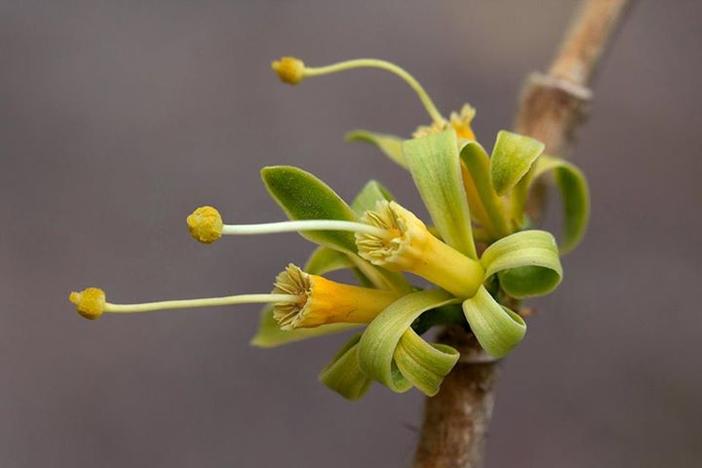Honeysuckle Tree
(Turraea nilotica)
Honeysuckle Tree (Turraea nilotica)
/
/

Bart Wursten
CC BY-SA 3.0
Image By:
Bart Wursten
Recorded By:
Copyright:
CC BY-SA 3.0
Copyright Notice:
Photo by: Bart Wursten | License Type: CC BY-SA 3.0 | License URL: https://creativecommons.org/licenses/by-sa/3.0 | Uploader: Bart Wursten | Publisher: Wikipedia Commons

Estimated Native Range
Summary
Turraea nilotica, commonly known as Honeysuckle Tree, is a deciduous shrub or small tree native to a variety of habitats in tropical Africa, including savannahs, deciduous woodlands, and sometimes in riverine forests. It typically grows to a height of 2-5 meters with a similar spread. The Honeysuckle Tree is characterized by its glossy, dark green leaves and its fragrant, white to pale yellow flowers that bloom in clusters, primarily during the warmer months. The flowers are followed by decorative, lantern-shaped fruits that add to the plant’s ornamental value.
Turraea nilotica is valued for its fragrant flowers and attractive foliage, which make it a desirable plant for tropical and subtropical gardens. It is used for various purposes, including ornamental plantings, hedges, and as a feature plant in garden borders. It requires well-drained soil, moderate watering, and thrives in full sun to light shade conditions. While it is not commonly known for severe pest or disease problems, it may be susceptible to root rot in poorly drained soils. This species is not typically associated with aggressive roots or invasiveness.CC BY-SA 4.0
Turraea nilotica is valued for its fragrant flowers and attractive foliage, which make it a desirable plant for tropical and subtropical gardens. It is used for various purposes, including ornamental plantings, hedges, and as a feature plant in garden borders. It requires well-drained soil, moderate watering, and thrives in full sun to light shade conditions. While it is not commonly known for severe pest or disease problems, it may be susceptible to root rot in poorly drained soils. This species is not typically associated with aggressive roots or invasiveness.CC BY-SA 4.0
Plant Description
- Plant Type: Shrub, Tree
- Height: 15-20 feet
- Width: 10-15 feet
- Growth Rate: Moderate
- Flower Color: White
- Flowering Season: Spring, Summer
- Leaf Retention: Deciduous
Growth Requirements
- Sun: Full Sun
- Water: Medium
- Drainage: Medium
Common Uses
Bird Garden, Butterfly Garden
Natural Habitat
Native to savannahs, deciduous woodlands, and riverine forests in tropical Africa
Other Names
Common Names: Mokoma Kanga
Scientific Names: , Turraea nilotica, Turraea nilotica var. glabrata, Turraea nilotica var. glabrata, Turraea randii, Turraea tubulifera,
GBIF Accepted Name: